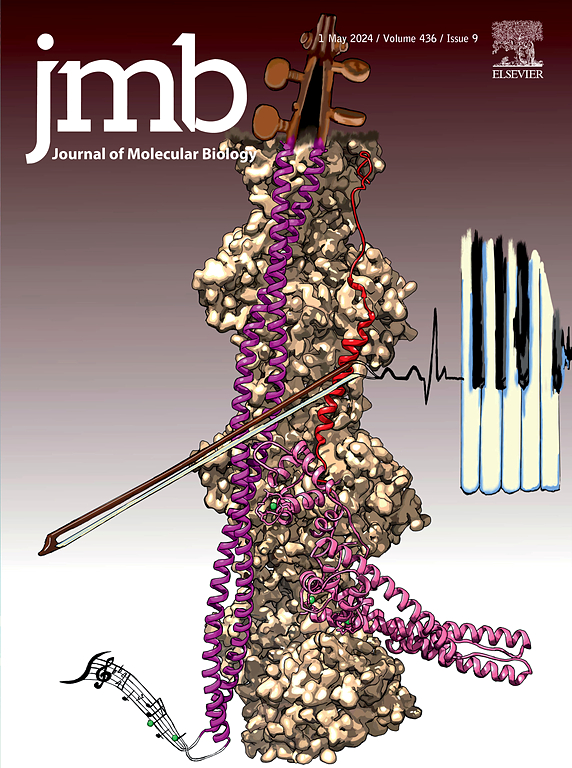Consecutive Steps of Membrane Insertion of the Two-spanning MscL Protein by Insertase YidC
IF 4.7
2区 生物学
Q1 BIOCHEMISTRY & MOLECULAR BIOLOGY
引用次数: 0
Abstract
A fundamental problem in biology is understanding how membrane proteins are inserted and assembled into their three-dimensional structures. The YidC/Oxa1/Alb3 insertases, found in bacteria, mitochondria, and chloroplasts play crucial roles in membrane protein insertion. In this study, we investigated the YidC-mediated insertion of MscL, a 2-spanning membrane protein by analyzing a series of translational arrested intermediates and probing the interactions with YidC using thio-crosslinking. Our findings reveal that the first TM segment and the second TM segment of MscL interact cotranslationally with the YidC membrane-embedded greasy slide, although in a delayed manner. The translocation of the periplasmic loop in between the two TM segments only occurs after TM2 engages with the greasy slide of YidC, showing that full insertion occurs late during synthesis. Remarkably, TM2 does not displace TM1 from the slide, and the contact is maintained even when the full-length protein emerges from the ribosome. These results demonstrate a well-ordered sequence of events during the membrane insertion of multi-spanning membrane proteins, providing new insights into the mechanistic role of YidC in protein assembly.

求助全文
约1分钟内获得全文
求助全文
来源期刊

Journal of Molecular Biology
生物-生化与分子生物学
CiteScore
11.30
自引率
1.80%
发文量
412
审稿时长
28 days
期刊介绍:
Journal of Molecular Biology (JMB) provides high quality, comprehensive and broad coverage in all areas of molecular biology. The journal publishes original scientific research papers that provide mechanistic and functional insights and report a significant advance to the field. The journal encourages the submission of multidisciplinary studies that use complementary experimental and computational approaches to address challenging biological questions.
Research areas include but are not limited to: Biomolecular interactions, signaling networks, systems biology; Cell cycle, cell growth, cell differentiation; Cell death, autophagy; Cell signaling and regulation; Chemical biology; Computational biology, in combination with experimental studies; DNA replication, repair, and recombination; Development, regenerative biology, mechanistic and functional studies of stem cells; Epigenetics, chromatin structure and function; Gene expression; Membrane processes, cell surface proteins and cell-cell interactions; Methodological advances, both experimental and theoretical, including databases; Microbiology, virology, and interactions with the host or environment; Microbiota mechanistic and functional studies; Nuclear organization; Post-translational modifications, proteomics; Processing and function of biologically important macromolecules and complexes; Molecular basis of disease; RNA processing, structure and functions of non-coding RNAs, transcription; Sorting, spatiotemporal organization, trafficking; Structural biology; Synthetic biology; Translation, protein folding, chaperones, protein degradation and quality control.
 求助内容:
求助内容: 应助结果提醒方式:
应助结果提醒方式:


